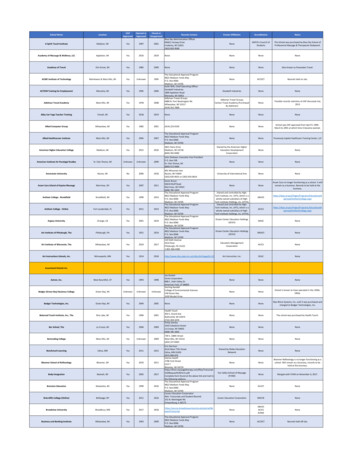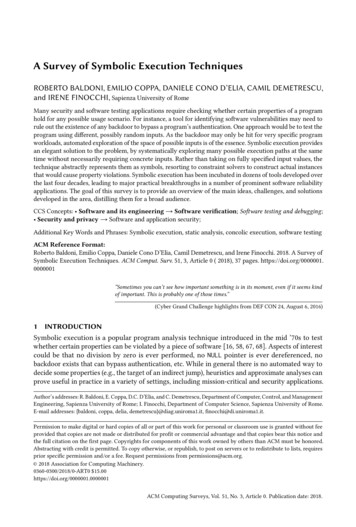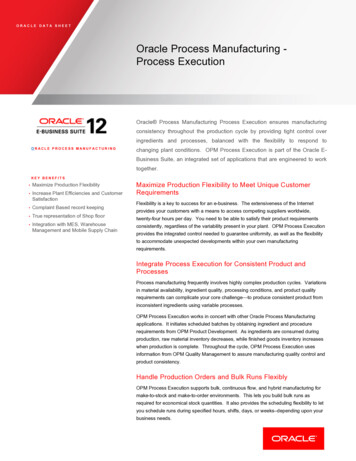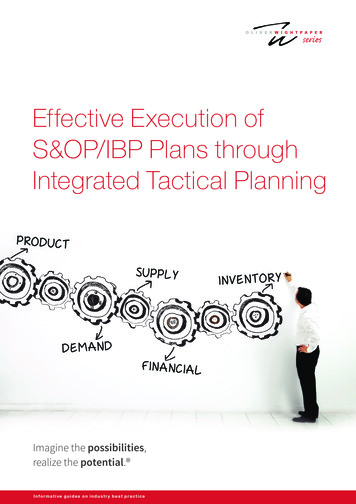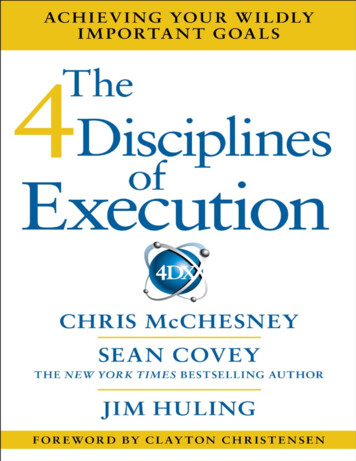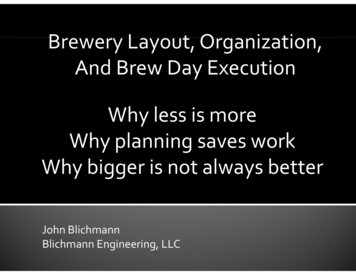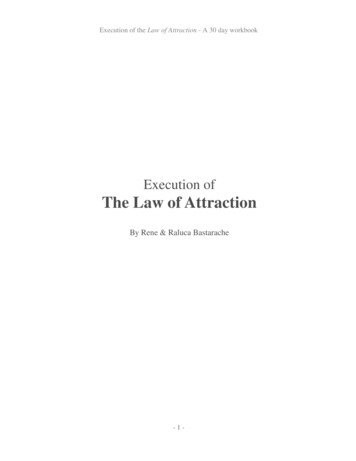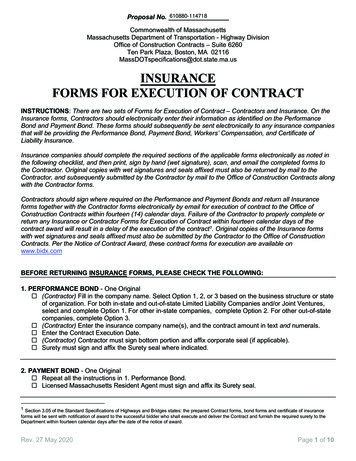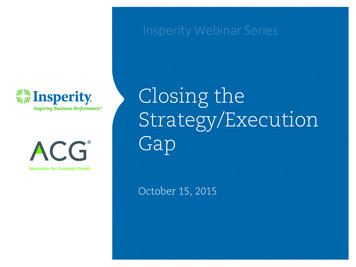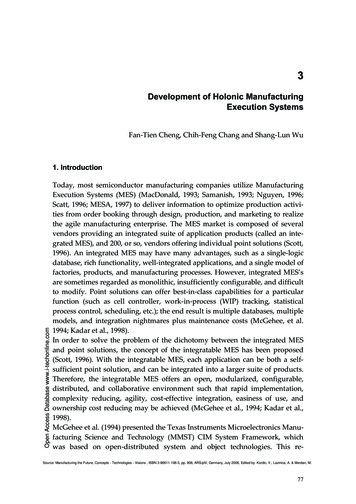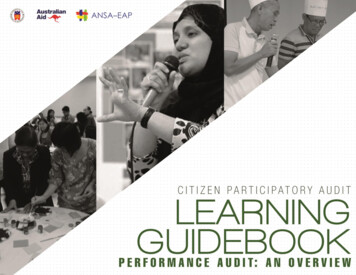
Transcription
CPA LEARNING GUIDEBOOK 1
Audit ExecutionSESSION OVERVIEWLEARNING OBJECTIVESThis session pertains to audit findings and evidence, techniquesand tips about data collection and data analysis and thefindings matrix.At the end of the session the participants would be able todescribe the different processes in the execution of the auditphase.The main activities of this audit phase are:a) Execution of audit tests in order to gather evidenceb) Evaluation of collected datac) Communicating audit results
SUGGESTED ACTIVITIES/SLESCONTENT/GUIDES FOR INSTRUCTOR/FACILITATORa) Lecture-discussionExecution of audit testsb) Exercises1. Conduct of Entry ConferenceMATERIALS/EQUIPMENT Powerpoint presentationComputerOverhead projectorMarking PenTapeMeta cardsThe audit team prepares an Entrance Conference Agenda inpreparation for the meeting with the agency head andconcerned officials to discuss the following: Audit objectives Scope of audit Audit duration Audit team composition Facilities: Office space, equipment, etc.TIMEFRAME60 minutesMETHODOLOGY LectureExercise and group discussionWalkthrough of the exercise solution/s Contact person Other requirements2. FieldworkThe fieldwork consists of collecting data and information setout in the audit planning. All fieldwork should be planned fromthe perspective of acquiring evidence intended to support thefindings appearing in the final report.CPA LEARNING GUIDEBOOK 3
Tips and hints for fieldwork Prepare everything that you will need in field during the planning phase. Don t forget to:ooooooooooooschedule visits, interviews and focus groups;book tickets and hotels;define how will be your transportation in the fieldwork and who will provide it;inform contact telephone numbers to supervisor and other team members;prepare necessary material (copies of questionnaires; interviews, focus groups and direct observation guides; name, address,phone, e-mail of all the persons will you visit in the field);prepare presentation letters.When scheduling field activities (interview, focus group etc.), mind the time required to go from one place to another and probabledelays in each activity.Don t rely only in electronic devices (recorders, computers etc.). Make some key notes.Start filling the findings matrix (causes, effects and recommendations) in the field, every time you have an insight for it.Fieldwork is time consuming. Don t expect time to deal with tasks that are waiting for you at the office.Be sure to collect all the material you need. Some information might be hard to collect after the fieldwork.Wear proper clothes. You are representing your office, so, when talking to authorities and managers, don t wear casual clothes(unless you are sure they will wear casual clothes too). On the other hand, if you will talk to beneficiaries (especially people with lowlevel of education), formal clothes might intimidate them and you won t be able to establish rapport and obtain reliableinformation.CPA LEARNING GUIDEBOOK 4
3. Audit EvidenceThe information collected and used to support audit findingsare called audit evidence. All audit findings and conclusionsmust be supported by audit evidence.Collection of evidence may be considered a mechanical taskbut an important activity and consumes lots of time and effortbecause the quality of data collected will determine the auditfinding. To avoid getting caught up in details and a flood ofdata, detailed assessments of the need for information mustbe made both before and during the audit.Considerations in Collecting Audit EvidenceThe reliability of information to be used as audit evidence isinfluenced by its source and nature and the circumstanceunder which the evidence is obtained. The following factorsinfluence the reliability and competence of audit evidence:a) The reliability of audit evidence is increased when itis obtained from independent sources outside theagency.b) The reliability of audit evidence generated internallyis increased when the related controls imposed by theagency are effective.c) Audit evidence obtained directly is more reliablethan audit evidence obtained indirectly or byinterference.d) Audit evidence obtained in documentary form ismore reliable than evidence obtained orally.e) Original documents are more reliable thanphotocopies.f) Testimonial evidence obtained under conditionswhere persons may speak freely is more reliable thanevidence obtained under compromising conditions.g) Testimonial evidence obtained from someone who isunbiased and has complete knowledge of the area ismore reliable than one obtained from someone who isbiased or has only partial knowledge.CPA LEARNING GUIDEBOOK 5
Relevance and Sufficiency of Audit EvidenceRelevance of evidence requires that the evidence bears aclear and logical relationship to the audit objectives and tothe criteria while sufficiency of evidence refers to the quantityof evidence required to come to an opinion on the auditobjective and to support an observation.Auditors should always remember that the burden of proof ofproviding sufficient evidence to substantiate an audit findingrests with them. They must use their judgement about what isenough.Factors to Consider in Assessing Sufficiency of Evidence the quality of evidence gathered the level of materiality or significance of the finding the degree of risk associated with coming to an incorrectopinion known client sensitivity to an issue intended level of audit assurance experience gained in previous audits as to the degree ofreliability of the auditee’s records persuasiveness of the audit evidence cost of obtaining the evidence relative to the benefits interms of supporting the finding.CPA LEARNING GUIDEBOOK 6
Types and Sources of EvidenceType of EvidenceSources of EvidencePhysicalThis type of evidence can be obtained from the following sources: observation of processes, procedures, etc. site visits to gain personal knowledge of the physical state ofwork as they are at a point in time physical verification of assets, etc.TestimonialThis type of evidence comes from interviews with interested parties. Itcan be documented in the form of interview notes, recordedconversations in magnetic tapes or corroborated evidence ortestimonies from other people that have knowledge of the issue athandDocumentaryThis type of evidence is the most commonly used source of evidence.The following are the sources where documentary evidence can beobtained: Manuals Files Reports Instructions ContractsCPA LEARNING GUIDEBOOK 7
Type of EvidenceSources of Evidence Invoices VouchersAnalyticalThis type of evidence may not be easily available in a ready-madeformat. Most of this evidence must be developed by the auditorElectronicThis may include the following: Hardware and network diagrams Operating systems software Network and communication software Time and attendance records Application programs Library listings Flow diagrams, source code and file layoutsOther forms of Audit evidence: Those obtained by direct inspection or observation Confirmation from third parties Notes of interviews Statistics, comparison, analysis developed by theaudit team Copies of actual documentationCPA LEARNING GUIDEBOOK 8
Purpose of Gathering Audit EvidenceGathering relevant and sufficient audit evidence enables theThere are several reasons for concentrating particularly onevidence requirements in the examination phase: First, credibility depends on the quality of evidencegathered in the audit examination.audit team to: Develop observations about whether or notperformance is consistent with criteria Conclude against each audit objective Identify opportunities to improve performance Support audit recommendations and conclusions Second, gathering too much or too little evidencecould be expensive or risky. Third, the timing when audit evidence is obtainedshould be within a schedule that will allow deeper andfuller probing by the audit team.Methods of Gathering EvidenceEvidence gathered may be qualitative in nature and requires extensive use of professional judgement. Accordingly, the auditorwould ordinarily seek corroborating evidence from different sources in making assessment and forming conclusion. The most commonmethods or techniques in gathering evidence are the following:Methods/ TechniquesExplanationDocument reviewThis evidence may be in physical or electronic form. It may be internal or external to the agency. It includesaccounting records, copies of outgoing and incoming correspondence, job descriptions, plans, budgets,internal reports, policies and procedures and minutes of meetings.InterviewsInterviews can be useful, but it is necessary to identify the right people to provide information andcorroborate oral information. Result of interview should be confirmed by other independent sources such asdocuments, observations, or other interviews. The interview process is like a funnel, with a lot of data goingfrom the top and a much smaller amount of information or evidence coming from the bottom. Some of whatare lost are useful and some are not. Here are some points to remember in getting the most of the interview:CPA LEARNING GUIDEBOOK 9
Methods/ TechniquesExplanation Not everything said by the respondent is heard and understood by the interviewer. Not everything understood by the interviewer will be remembered and written down. Not everything recorded will be confirmed by the respondent. Not everything the respondent believed will be corroborated by independent sourceQuestionnaires are lists of detailed questions normally sent to organizations or individuals for their completionand used by the audit team to get a series of responses to the same questions from different sources. Whilethis method can prove very effective for the auditor, if wrongly used, it can prove too much of a burden inboth time and resources for the auditee. Ideally, the questionnaires to be used should be pre-tested toevaluate their effectiveness. Use of questionnaire to collect data can be very time consuming. It is thereforenecessary to identify the potential respondents, design the questionnaire, await response and follow up nonrespondents before analysis of data can start. A realistic timetable should be established so that the job canbe completed within the timeframe.QuestionnairesThere are three (3) basic structures for questions: open, closed or probe questions.Open questions – respondents are asked to reply in the narrative form. Such questions should be restricted asmuch as possible because they provide qualitative responses and there is less control over the completenessand accuracy of the answers. There is greater tendency not to respond and it is much difficult and timeconsuming to process and analyse the responses in a meaningful way.Closed questions are used to establish specific facts or information and are answerable by “yes or no”CPA LEARNING GUIDEBOOK 10
Methods/ TechniquesExplanationresponse, or identification of person, time, location, number, etc. They are easier for the respondents toanswer and should therefore result in better response rates and make responses more comparable.Probe questions seek additional information or clarification of thinking behind information already supplied.They should be used to explore in detail particular opinions/attitudes.In deciding which type of questions to use, we should consider the following factors:Analysis of dataPhysical observation How much do you know about the range of possible answers? How much time do the respondents have or how much time are they willing to give? How many respondents will be required to get satisfactory answers?The analysis of data involve computations, analysis of ratios, trends and patterns in data obtained from theagency and other relevant sources and comparison with prescribed standardsDirect observation is generally more powerful than evidence from secondary sources. Going to the “field” toobserve the audit first hand is effective way to gather evidence. Recording the results of field observation inphotos or videos is an efficient way of capturing first hand evidence for later analysis. Photos and observedexamples may also have a powerful impact on the reader of the report. Auditors should, however, be awarethat people perform differently when they are being observed.Observation usually involves several steps such as selecting, watching and recording objects, events oractivities that play a significant part in the administration of government programs. The observed conditionscan then be compared with criteria and the consequences can be analysed.InspectionInspection includes physical examination which provides audit evidence regarding existence, but notCPA LEARNING GUIDEBOOK 11
Methods/ TechniquesExplanationnecessarily about the agency’s rights and obligations and the valuation of the assets.Seminars andhearingsSeminars might be used for instance to: acquiring knowledge of a specialist area; discuss problems,observations, and possible measures; air arguments for and against different views and perspectives.Focus groups, focalgroups, referencegroups and expertsFocus group is a technique used to collect qualitative data. The source of data is the discussion andinteraction among participants of a group brought together to discuss specific topics and issues. Referencegroups may be composed of people from within or outside the SAI and are usually made up of experts andspecialists.4. Evaluating Audit Results MeasurableEvidence Analysis and its Objectives AcceptableEvidence analysis is the validation of the evidence gatheredwith a view at arriving at fair and credible findings leading toconclusions. Its main objective is to reduce and convert a massof information into findings and conclusions that are simpleand comprehensible, easy to understand, meaningful andcredible. Evidence analysis should help an auditor arrive atfindings leading to conclusions which have th
CPA LEARNING GUIDEBOOK 5 3. Audit Evidence The information collected and used to support audit findings are called audit evidence. All audit findings and conclusions must be supported by audit evidence. Collection of evidence may be considered a mechanical task but an important activity and consumes lots of time and effort because the quality of data collected will determine the audit .
